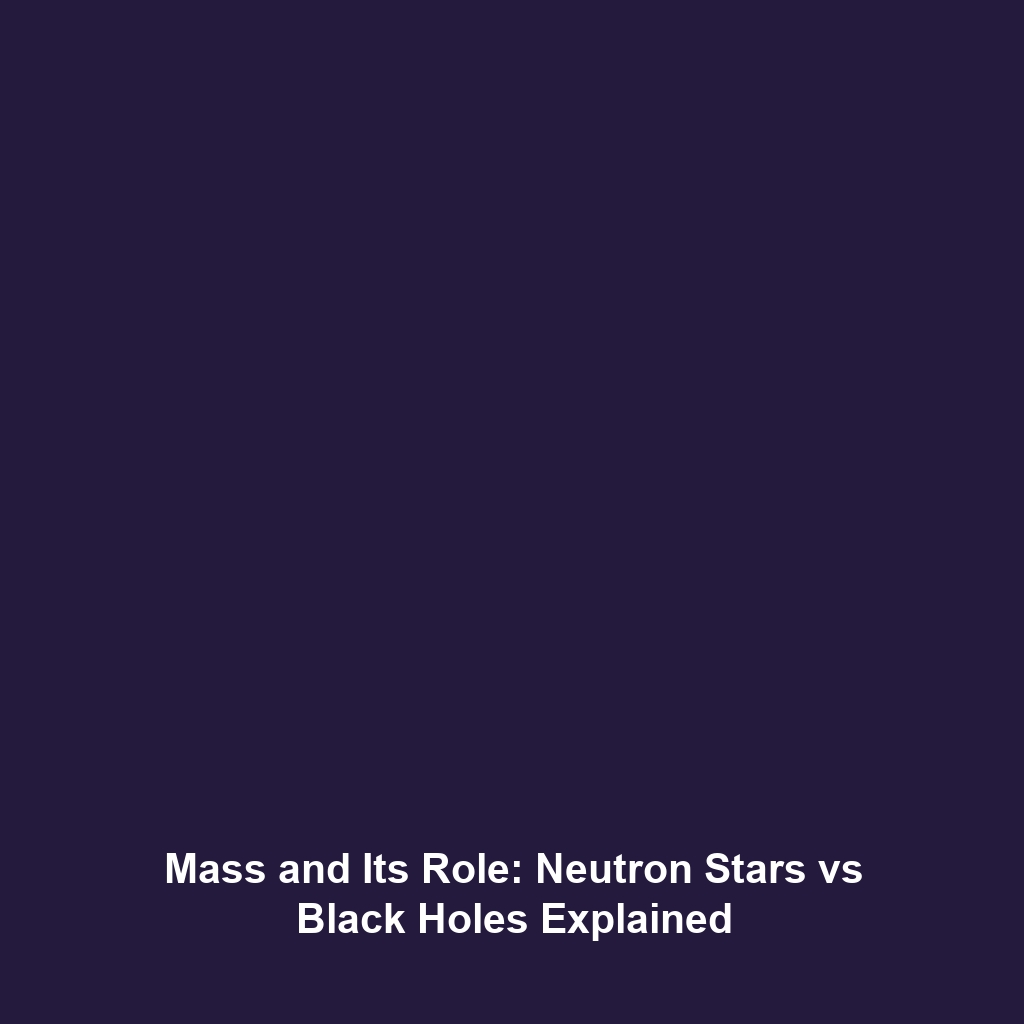How Mass Influences the Type of Remnant: Neutron Star vs Black Hole
Introduction
The type of astronomical remnant produced after a massive star undergoes a supernova explosion is crucial in the study of black holes. Determining whether the remnant becomes a neutron star or collapses into a black hole is primarily governed by the star’s mass. This differentiation has profound implications for our understanding of cosmic evolution, gravitational waves, and the nature of the universe itself. In this article, we delve into the significance of mass in shaping the fate of dying stars and subsequently influencing the category of black holes.
Key Concepts
Understanding Mass and Stellar Evolution
Stars evolve based on their initial mass, and this evolution dictates their destinies. Key concepts include:
- Stellar Mass Limits: The balance between gravitational collapse and pressure from nuclear fusion defines whether a star ends up as a neutron star or a black hole.
- Neutron Star Formation: Typically, stars with masses up to about 2-3 times that of our Sun end their lives as neutron stars, supported by neutron degeneracy pressure.
- Black Hole Formation: Stars exceeding approximately 20 solar masses often collapse into black holes, as the gravitational forces overpower any counteracting pressure.
The Role of Supernovae
The explosive death of stars in supernova events serves as a crucial moment in determining the remnant’s type. During this process, the core collapses, and the mass above the core influences whether the leftover material forms a neutron star or a black hole.
Applications and Real-World Uses
Understanding how mass influences the type of remnant (neutron star vs black hole) is pivotal in various scientific applications:
- Gravitational Waves Detection: Research into neutron stars and black holes helps scientists understand gravitational waves, leading to advancements in astrophysics.
- Cosmic Distance Measurement: Observing neutron stars and black holes aids in determining distances on cosmic scales, enhancing our grasp of the universe’s expansion.
Current Challenges
Despite the advances in our understanding, several challenges exist in studying how mass influences remnant types:
- Observational Limitations: Many black holes are not directly observable, making it hard to gather data.
- Theoretical Models: Current models may not fully encapsulate the complexities involved in stellar evolution and remnant formation.
- Mass Measurement Issues: Accurately measuring stellar masses can be problematic, affecting predictions about their end states.
Future Research and Innovations
Future research endeavors are poised to enhance our understanding of mass influences on stellar remnants:
- Advanced Simulation Techniques: More sophisticated simulations may shed light on the physics of collapsing stars and black hole formation.
- Next-Generation Telescopes: Innovations in telescope technology promise better detection of neutron stars and black holes, leading to richer data.
- Multi-Messenger Astronomy: Integrating various observational data types will provide a broader perspective on these enigmatic remnants.
Conclusion
Mass plays a critical role in determining whether a stellar remnant becomes a neutron star or collapses into a black hole, influencing our understanding of cosmic phenomena. Continued research in this field promises to reveal more about the mysteries of the universe. For more on black holes and stellar evolution, visit our other articles to deepen your knowledge.
